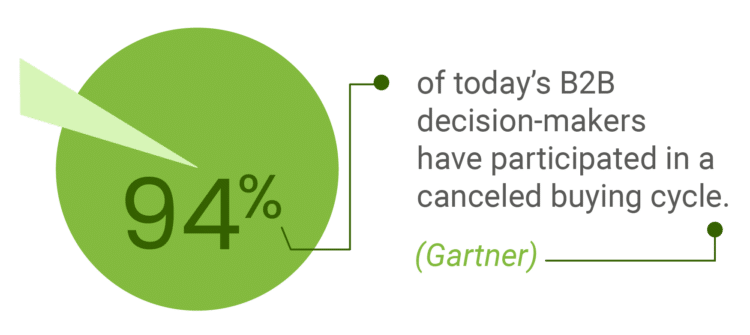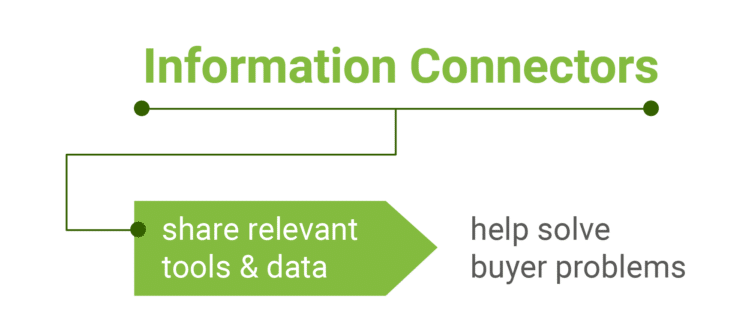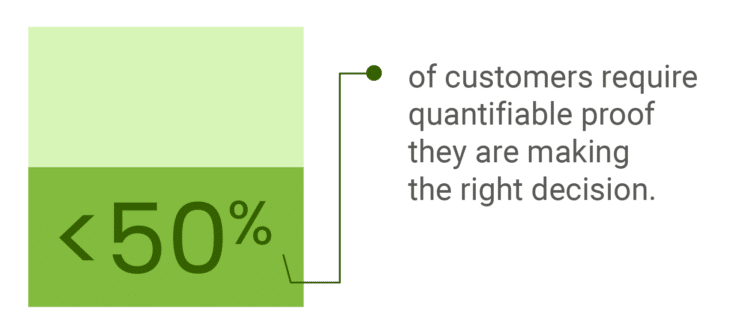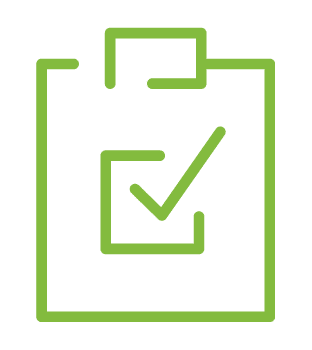Good sales enablement helps sellers sell.
Great sales enablement also helps buyers buy.
Gartner coined the term “buyer enablement” to explain just that; the plight of the modern B2B buyer includes more stakeholders, more sales pitches and product jargon, and much more information to digest – rather, deconflict. Gartner found that buyers are spending nearly two-thirds of their time dealing with the details of making a purchase decision for a solution designed to save them time. Counterintuitive? Definitely. This shift in the buyer’s journey has deemed it almost unnavigable, often causing buyers to throw their hands up and “do nothing.”

Sales Enablement uses sales tools and methodologies to train and increase the efficiency and effectiveness of the seller.
Buyer Enablement equips buyers with the information they need to successfully sell your solutions internally. It creates internal advocates or champions out of first-line buyers.
Your sales strategy should incorporate both sales and buyer enablement to guarantee a smooth buyer journey and sales success. Fortunately, you don’t need to identify separate solutions to solve for these challenges. It is possible to deploy a sales enablement solution that empowers your sellers to lead prescriptive and differentiating sales conversations that build confidence in your solution and compel buyers to say “yes!”.
Gartner’s insightful report on buyer enablement asserts that helping to intelligently guide and advise the prospect is critical to simplifying the buying experience and accelerating the journey. With multiple, price-sensitive stakeholders to convince, customers are three times more likely to buy a bigger deal with less regret when reps lead with value. What does lead with value mean? Enabling your buyers starts with educating them to retell the story of your value and how it can solve the deeply-rooted issues within their organization. The responsibility of your sales reps is to create champions to sell for them and to make sure they stay the course.
The report notes a powerful distinction between sales reps who are information authorities and information connectors. “Information Authorities” are subject matter experts, selling based on their own experiences. 
How do you ensure your sales reps act as information connectors for buyers?
Give them the tools to make it happen. Your sales enablement technology should be more than another portal to store content. Incorporating diagnostic tools and assessments like ROI calculators or TCO comparisons into your solution can empower your reps to guide buyers with the prescriptive advice they need to make informed purchase decisions they won’t regret later.

Not convinced? These three benefits of buyer enablement may change your mind.
3 Reasons to Implement Buyer Enablement Today
1. Buyer Enablement Accelerates Purchase Decisions:
 Gartner defines buyer enablement as “the provision of information that supports the completion of critical buying jobs.” If you equip your sellers with static content about product features, you’re missing an opportunity to differentiate your solution and help the buyer sell it internally. Conversely, if you empower your sellers with the diagnostic tools or assessments required to effectively quantify and communicate the value your product or solution will bring to your buyer’s business, first-line buyers are emboldened to retell a compelling and convincing story to stakeholders. This results in a smoother buying experience and, by default, accelerated purchase decisions in your favor.
Gartner defines buyer enablement as “the provision of information that supports the completion of critical buying jobs.” If you equip your sellers with static content about product features, you’re missing an opportunity to differentiate your solution and help the buyer sell it internally. Conversely, if you empower your sellers with the diagnostic tools or assessments required to effectively quantify and communicate the value your product or solution will bring to your buyer’s business, first-line buyers are emboldened to retell a compelling and convincing story to stakeholders. This results in a smoother buying experience and, by default, accelerated purchase decisions in your favor.
2. Buyer Enablement Increases Customer Referrals:
Empowering buyers to gain consensus from internal stakeholders not only makes the process easier and less stressful for them, it earns them credibility within the organization. The onus of making an argument for a purchase decision doesn’t fall on them, because they are able to align stakeholders with a strong, financially justifiable business case. When you make them look good, they’ll likely value your relationship even more.
3. Buyer Enablement Increases Likelihood They Will Buy From You Again:
Powerful data is hard to ignore – especially when it’s backed by customizable, online ROI and TCO calculators. These tools allow you to communicate the unique value you can deliver earlier in the decision-making process. When customers make high-value purchase decisions that include quantifiable ROI, they’re less likely to regret it later.
Value-Based Selling for the Win
By empowering your customers and prospects to overcome unique business challenges, exceed goals, and satisfy stakeholders along the way, you can make the journey not only navigable but enjoyable for buyers. Reaching the last mile of the sales process means enabling buyers to navigate the ship – as long as you provide the tools and technology to keep it afloat.
Considering deploying a new sales strategy? Ensure your sales enablement solution meets the requirements below to successfully enable both sellers and buyers for improved sales outcomes.

Sales (and Buyer) Enablement Solution Requirements Checklist:
- Can you build customer-centric branded workspaces with customized and interactive presentations that address audience-specific challenges?
- Can you leverage real-time third-party data and up-to-the-minute content to turn sales presentations into value-based conversations with actionable insights?
- Can you showcase your unique value by incorporating interactive selling tools into your sales assets?
- Can you leverage configurable ROI calculators, TCO and product comparisons, and diagnostic and benchmark assessments in real-time to quantify your solution benefits?
- Can your reps deliver business insights your buyers can’t find anywhere else?
- Can you implement situational and contextual sales training focused on buyer challenges and use cases with micro-lesson modules to improve win rates?
- Can you better leverage your content library with AI-powered content recommendations that ensure your most effective content is shared with the right people at the right time?
Download our guide How to Close a Sale by Changing the Conversation to learn more about improving sales performance by effectively communicating your total value to buyers.

Comments are closed.